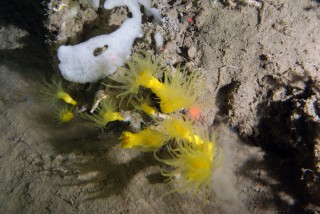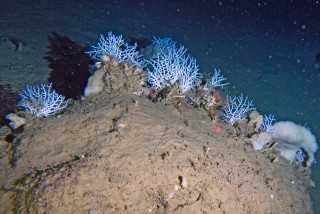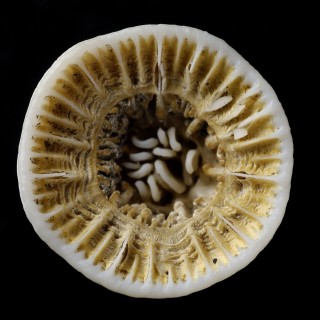One of the main goals of the Perth Canyon research cruise is to locate and collect a variety of marine organisms that are living down at great depths, in particular deep-sea corals. But what are deep-sea corals and why are researchers so interested in them?

Deep-sea corals are widely distributed within the earth’s oceans and some of them (e.g., Lophelia spp.) are habitat engineers in what is often considered a “barren underwater desert”. Corals form unique 3D reef structures, often called banks or thickets that create biodiversity hotspots by attracting a large variety of other animals. However, deep-sea corals differ from their shallow water tropical counterparts in many ways, making them highly unique organisms for both marine ecosystems and for scientific research.
A little bit of biology

Tropical corals typically live in fairly shallow water environments (<30 meters) where light levels are high, water temperatures are warm (>18°C), nutrients levels are low, and water chemistry is highly favourable to the formation of their skeletons. In contrast, deep-sea corals live in an entirely different world characterized by complete darkness, often ice-cold temperatures and water chemistry characteristics that make it much harder to form skeletons. Unlike their tropical counterparts, deep-sea corals also cannot obtain their energy requirements from sunlight because they lack the photosynthetic algal symbionts that tropical corals possess. Therefore, deep-sea corals have had to find ways to overcome these extreme conditions.

But how do they do this? First, these corals gain all of their nutritional needs from feeding on zooplankton and other particles in the water column, which they catch with stinging cells located on their tentacles. Second, deep-sea corals have a highly efficient buffering mechanism that allows them to manipulate the chemistry at the site where the skeleton is being formed. This enables them to grow (calcify) their skeletons despite unfavourable conditions.
However, these adaptions come at a cost. Although deep-sea corals can calcify under extreme environmental conditions, they often grow up to 100 times more slowly than their shallow water counterparts. They also require much more energy to maintain highly efficient buffering mechanism. Deep-sea corals are therefore fragile organisms that are highly vulnerable to other stressors.
Uncertain future for deep-sea corals
Deep-sea corals are expected to be one of the first and foremost impacted by climate change, and are likely already being affected, given that the water chemistry of the world’s ocean is rapidly changing due to increases in atmospheric CO2 concentrations. This makes the deep sea environment even less suited for the formation of coral skeletons and reefs, however, hope is not lost completely. Recent studies have shown that deep-sea corals highly efficient buffering mechanism will allow them to maintain their growth rates over the coming decades, even as water chemistry becomes less favourable. Further, new genetic evidence suggests that significant coral diversity originated in the deep sea, and this environment may have served as a refuge for coral diversity during unfavourable times. By accessing the environmental information that is archived in the skeletons of long-lived deep sea corals, we hope to get a better understanding of how resilient or vulnerable deep-sea corals are to on-going ocean change.


